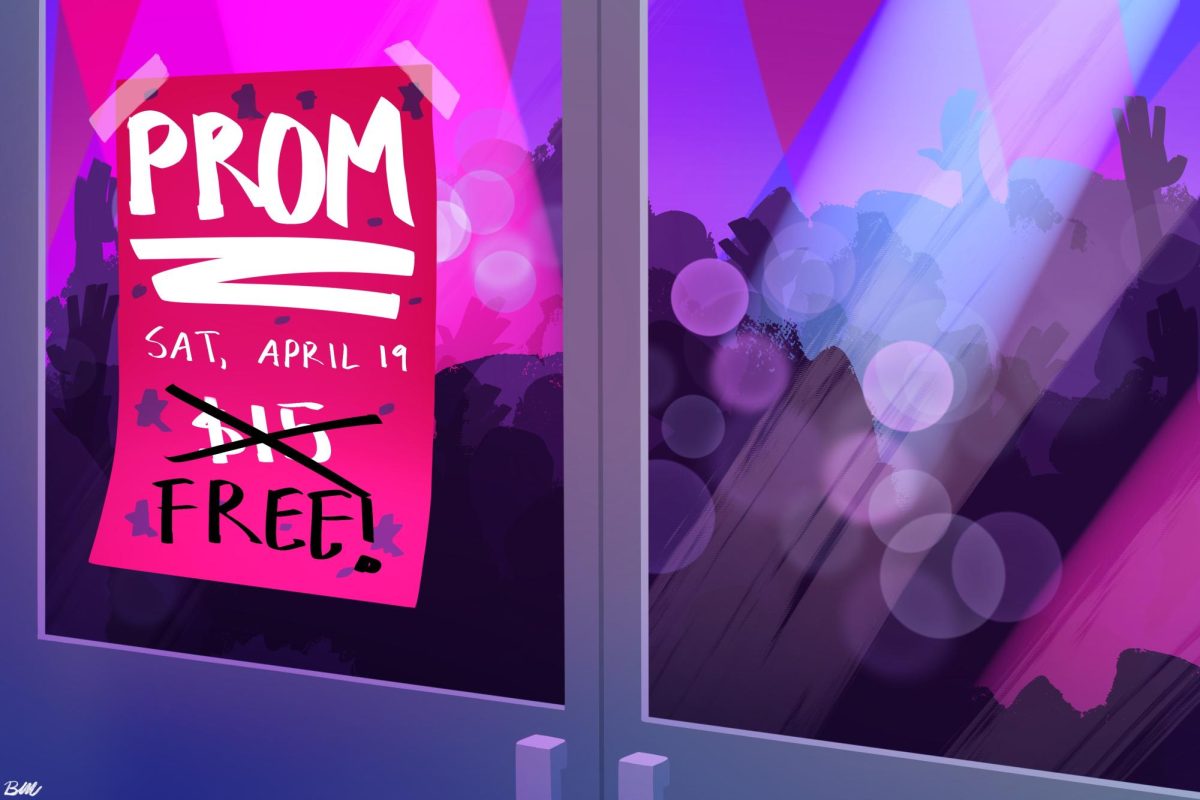Students are used to standing in long lunch lines, just for a small serving of orange chicken served with a side of crunchy rice. Or maybe it is a soggy hamburger patty.
But that is not all. Each student is forced to take a choice of a fruit or vegetable, whether they want it or not. The student sits down at their table, eats their chicken and their rice, then throws away the fruit or vegetable.
The amount of wasted healthy food is astounding. The uneaten fruit and vegetables are scattered all over the lunchroom floor or piled into the trash cans every day after lunch.
Schools around the country waste time and money cleaning up and buying the uneaten food. What is the good of purchasing and forcing students to grab food in the line that they won’t eat?
Parents of students may remember school lunch looking like a mall food court, with Taco Bell, Pizza Hut, McDonalds, etc. But, in 2010, the Obama administration put up a fight with school lunches, pushing them to become healthier. The Obamas launched their “Let’s Move!” campaign, with the end goal of solving childhood obesity. The campaign implemented strategies like updating the child nutrition policies, and ensuring that all students have access to healthy affordable food in schools.
But having access to turned into forcing students to take fruit and vegetables, no matter if they wanted to eat them or not.
These strategies were intended as a way to implement healthy lifelong habits into the future of America’s population. The campaign started the “Healthy Hunger-Free Kids Act” which mandates more fruits and vegetables, whole grains, and less sodium in exchange for more federal funding for school meals.
The “Healthy Hunger-Free Kids Act” obviously sounds like it would be a no brainer to make students eat a fruit or vegetable while eating their lunch, but it is easy to wonder how often the carrots, and apples, are being taken by the students in the lunch line are actually being consumed.
Now that it has been 14 years since the “Let’s Move!” campaign launched, the childhood obesity rates have increased from 16.9% in 2010, to nearly 20% in 2024, according to the Center For Disease Control and Prevention. The campaign made by the Obamas has not worked and Michelle Obama’s goal is far from being reached. The campaign bill should be abolished and business should be allowed to rent space to sell lunch at public schools around the United States.
While the act forces cafeteria workers to make students have a fruit or vegetable with their lunch, how much of that is really being consumed by students?
“I still eat them, but I wish they were just higher quality,” Highland sophomore Manase Wolfgramm said.
While observing the Highland lunchroom, I tend to see students immediately throwing away their fruit or vegetable, or just letting it sit on their plates, untouched. Students will also throw away other parts of their lunch.
“Probably with school lunch, about 80 percent of it is wasted each day,” Highland custodian Mathew Lilly said. “Kids will eat just a couple bites of what they want and throw the rest of it away. It’s pretty sad.”
The amount of waste that comes from people throwing away food is more damaging to the school than enforcing students to take a healthy food from the lunch stand. Students throwing away their uneaten fruit eliminates the whole point of the Obama’s act and brings back another point of why we should bring back school lunch to its original and more exciting form.
These disgusting looking lunches currently being served in school cafeterias will turn students away from purchasing and eating school lunch.
“It’s not good for you, and after I eat it, I feel sick,” Wolfgramm said.
Students don’t like looking at a half rotten apple, served with a burnt burger patty. This, I believe, is much of the reason kids will throw out half their lunch, because there is usually only one, or two items worth eating.
“There are only like four options every day, and people get tired of it. If they brought back better food and switched it up every day, I believe more kids will not only get school lunch but eat it all,” Lilly said.
Sometimes, due to the lunch looking extremely inedible, students who can’t afford to pack a lunch or purchase something else will choose to not eat anything at all. This leaves children hungry and keeps the “Stop Child Hunger Act” from working.
If students saw things like Taco Bell, Chipotle, and McDonald’s in the school cafeteria, they would be more drawn into purchasing school lunch, and not going off-campus to other fast-food restaurants. Students will be happier, have fuller stomachs, and that will get students more engaged in learning. Plus, schools can earn money from renting space to these businesses and use that to help fund other programs in the building.
According to the Child & Family foundation, students who are not supplied with enough nutrients will have a harder time focusing in the classroom. If the congress wants public school students in America to learn better, feeding them better lunches is a big step that will improve students learning.
School Lunch Needs A Corporate Flavor
Reece Griffin, Staff Writer
November 5, 2024
0






























